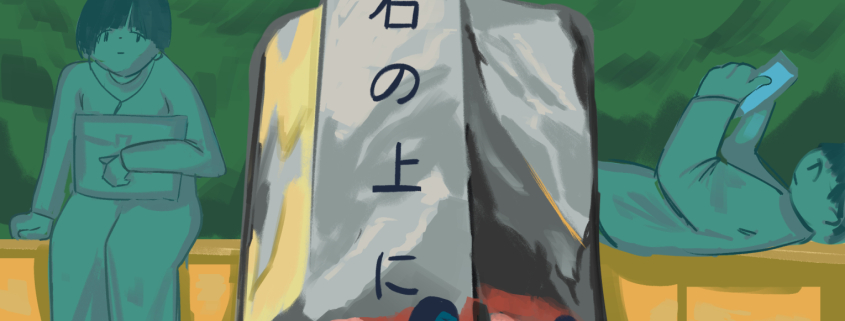Letter to the Editor: A simple Japanese garden is not enough to erase USC’s tainted history

Growing up with two generations of Japanese Americans who were incarcerated during World War II, I was excited to hear about President Carol Folt’s decision to dedicate a rock garden to the USC Nisei students — children of Japanese immigrants who were forced into incarceration camps and whose education was stripped from them, as they were not allowed to complete their degrees after the war. However, as I strolled into the new rock garden and admired its lush greenery and beauty, I couldn’t help but look around for the dedication plaque – one that officially dedicates this section of campus to honoring the Nisei students – but I couldn’t find it.
Puzzled, I took a closer look at the kanji engraved on the beautiful rock by the entrance with its translation below, “On a stone for three years – A Japanese Proverb.”
This phrase immediately reminded me of the war that entrapped my ancestors in incarceration camps for nearly three years from 1942 to 1945, but the true meaning of the proverb still escaped me. In hopes of discovering its established meaning, I turned to Google. Some sources stated that the proverb teaches how “perseverance wins in the end and that endurance is a virtue” while others mentioned it’s a “lesson in patience: three years sitting on a cold stone will eventually make it warm.”
In talking to one of my peers, Justin Abe, a USC Japanese language alumnus, I discovered another meaning to the proverb: if one has the discipline to sit on a stone for three years, nothing can stop them from doing anything else.
Although I admire the ode to Japanese culture that the kanji inscribed on the rock represents, I became disheartened, as the meaning of the garden is subjective to the beholder and does not explain the true reason for its existence: the University’s attempt to right their wrongdoings of unjustly prohibiting all Nissei students from continuing their studies after the war.
The space is intended to be a dedication to the University’s 121 Nisei students whose education was wrongfully taken away. Calvin Abe, the garden’s architect, constructed it to be a reflective and meaningful space that is “symbolic of a return” for the Nisei scholars who were never allowed to finish their studies almost 80 years ago. But without a dedication plaque or even some reference to that context: Is this garden really a memorial to the Nisei students? According to the architect, “the garden is a place to relax and reconsider what happened in the past, an expression of perseverance and hope.” As it is currently, visitors won’t know to reconsider the University’s tainted past, to them the garden will just be another pretty place to relax on campus.
It’s admirable that in addition to erecting the rock garden, President Folt provided Nisei scholars with posthumous honorary degrees and a formal apology at the Asian Pacific Association gala last April. This recognition came twelve years after the Japanese American Citizens League passed a resolution that urged USC to award honorary degrees to the Nisei and eleven years after a student-run coalition called the Nisei Diploma Project at USC sought to achieve this acknowledgment. With this, the University has finally caught up with several other California universities that have already issued honorary degrees to Nisei students in the past few decades.
At San Francisco State, there is another memorialized garden in honor of former Nisei students. Their Garden of Remembrance honors the 19 students who were robbed of their degrees and features a plaque that provides historical information about the Japanese American incarceration and their affected Nisei students. In their dedication ceremony, San Francisco State said that they created the garden as a “beautiful and inspiring memorial [that] will stand on this diverse and international-minded campus as a permanent reminder of past errors and future commitment to the values we need to sustain our nation and our shared global society.”
USC must follow this example. I’d like to believe that we didn’t just build a garden to build a garden, but rather that we erected this symbolic and significant space to publicly acknowledge and honor our Nisei students. In order to formally honor them, the rock garden must include a section that explicitly lays out the history and meaning of this space so that all visitors can understand and grasp the importance of this area.
USC needs to do more than just say that the rock garden is a dedication to its Nisei students. The University must acknowledge its former wrongs permanently. A one-time speech at a gala and a vague proverb that provides outsiders with no context for why the space exists is not enough. The Nisei students deserve a plaque and USC must give it to them.
Sarah Johnson & USC Nikkei Student Union

